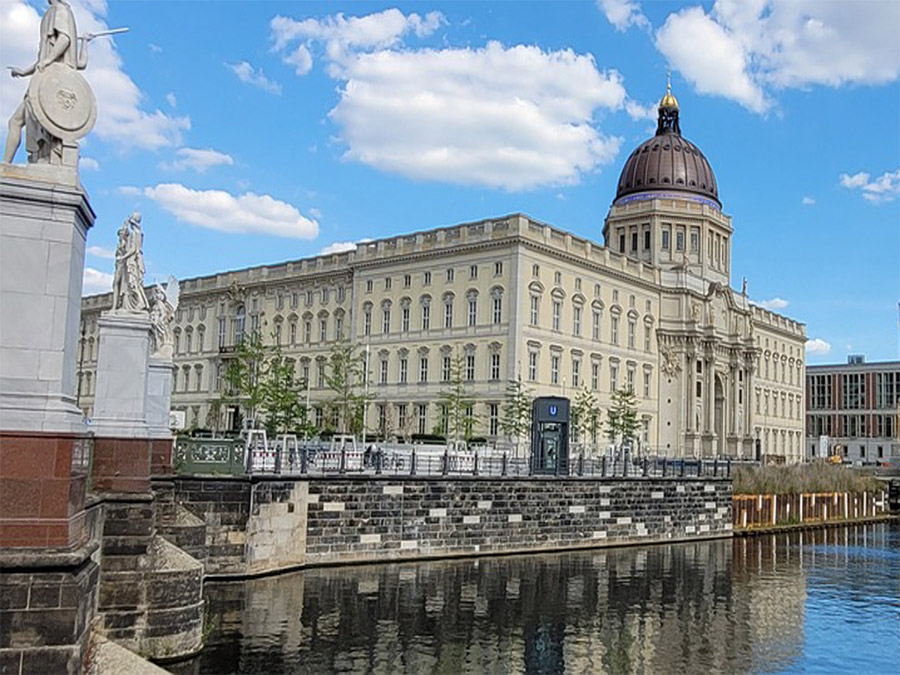Expanded by order of King Frederick I of Prussia according to plans by Andreas Schlüter from 1689 to 1713, it was thereafter considered a major work of Prussian Baroque architecture. The former royal palace was one of Berlin’s largest buildings and shaped the cityscape with its 60-meter-high dome.
Used for various government functions after the fall of the monarchy in 1918, it was damaged during the Allied bombing in World War II, and was demolished by the East German authorities in 1950. In the 1970s, it became the location of the modernist East German Palace of the Republic (the central government building of East Germany). After German reunification and several years of debate and discussion, particularly regarding the fraught historical legacy of both buildings, the Palace of the Republic was itself demolished in 2009 and the Berlin Palace was reconstructed beginning in 2013 to house the Humboldt Forum museum. The reconstruction was completed in 2020.
Overview
The Berlin Palace, also incorrectly known as the City Palace, is a building in the centre of Berlin, located on the Museum Island at Schlossplatz opposite the Lustgarten park. From the 15th century to the early 20th century, the Berliner Schloss was a royal and imperial palace that mostly served as the main residence for the Electors of Brandenburg, the kings of Prussia, and the German Emperors.
Damaged during World War II and later demolished by the East German government in the 1950s, the palace has been partially rebuilt and was completed in 2020. The reconstructed palace is the seat of the Humboldt Forum, a museum for world culture which is a successor museum of the Ancient Prussian Art Chamber, which was also located in the Berlin Palace during the 19th century. The Humboldt Forum has been described as the German equivalent of the British Museum.
The palace was originally built in the 15th century, but had changed in form throughout the next few centuries. It bore features of the Baroque style; its shape, which had been finalized by the mid-18th century, is for the most part attributed to German architect Andreas Schlüter, whose first design is likely to date from 1702, even though the palace incorporated earlier parts as seen in 1688 by Nicodemus Tessin. It served as a residence to various Electors of Brandenburg. It was the principal residence and winter residence of the Hohenzollern kings of Prussia from 1701 to 1918. After the unification of Germany in 1871, it also became the central residence for the German Emperors, who also served as the kings of Prussia.
After the proclamation of the Weimar Republic in 1918, the palace became a museum. In World War II, the building was heavily damaged by Allied bombings. Although it is thought to have been repairable, the palace was demolished in 1950 by the German Democratic Republic authorities following much criticism. In the 1970s, the Palace of the Republic was constructed on its site. After controversial public discussions, in 2002 the Bundestag decided to demolish the Palace of the Republic in order to make place for a partial reconstruction of the Berlin Palace.
The plans envisaged to reconstruct the entire exterior of the palace in the original style except the east side facing the Spree. The authentically reconstructed facades include various remnant sculptures and stones of the original palace. The inner courtyard facades are also modern, except three facades of the main courtyard which was originally built in 1699. The floorplan has been designed to allow future reconstruction of notable historical rooms. The building houses the Humboldtforum museum and congress complex, and was finished in 2020.


